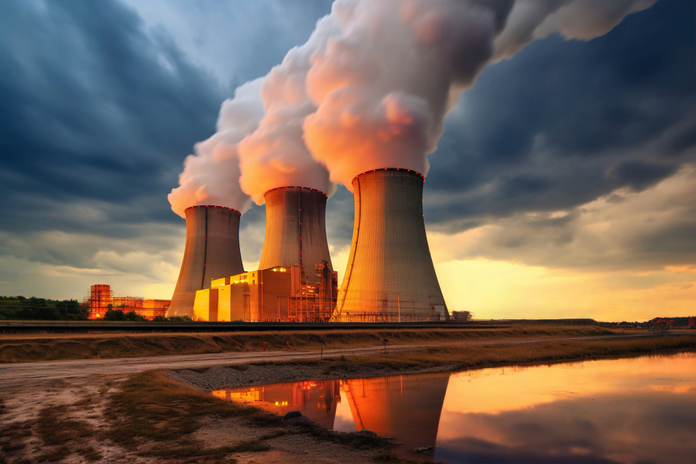U.S. Energy Secretary Jennifer Granholm emphasized the need for more nuclear reactors both in the United States and globally during a speech in Waynesboro, Georgia. This comes as Georgia Power Co. and three other utilities recently launched the second new reactor at Plant Vogtle into commercial operation, concluding a project that cost nearly $35 billion.
Granholm highlighted the necessity for 98 additional reactors with the capacity of units 3 and 4 at Plant Vogtle to meet electricity demands while reducing carbon emissions. “We must at least triple our current nuclear capacity in this country to achieve our goal of net zero by 2050,” Granholm stated.
Despite Granholm’s call, Chris Womack, CEO of Southern Co. (NYSE:SO), the parent company of Georgia Power, expressed caution about embarking on new nuclear projects soon. “The federal government should play a leading role in facilitating this reality,” Womack said. “We’ve had extensive experience, and we’re going to celebrate our achievements here for some time.”
The event on Friday concluded a week of celebrations marking the reactors’ success, although they were completed seven years behind schedule. Governor Brian Kemp of Georgia even suggested the possibility of a fifth Vogtle reactor, noting the increasing demand for carbon-free electricity from new industries.
The total projected cost for the new Vogtle reactors stands at $31 billion for Georgia Power and its partners, with an additional $3.7 billion paid by the original contractor Westinghouse, bringing the total near $35 billion. Georgia electric customers have already shouldered a significant portion of the costs, making Vogtle potentially the most expensive power plant ever. The federal government supported Vogtle by guaranteeing $12 billion in loans, lowering borrowing expenses.
Earlier in the week, the Biden administration hosted a meeting to promote nuclear power, announcing the creation of a working group to address challenges similar to those encountered at Vogtle. The administration also promised military commissions for reactors, which could reduce costs, and advocated for smaller reactors to replace coal-fueled plants.
Granholm suggested that learning from Vogtle’s construction challenges, such as starting building before finalizing plans, could help future projects. She projected that replicating the Vogtle reactor design could reduce costs by 30% with each subsequent build. “The question is, how do you learn from the new design in subsequent plants? Consistent design lowers costs significantly,” Granholm explained.
In Michigan, Granholm announced up to $1.5 billion in loans to restart the Palisades nuclear power plant, which shut down in 2022. However, critics question whether smaller nuclear reactors can be built more affordably and point out that the U.S. still lacks a permanent nuclear waste repository. Alternatives like solar energy backed by battery storage remain cheaper to build initially.
In Georgia, nearly every electric customer will bear the costs of Vogtle. Georgia Power owns 45.7% of the reactors, with smaller stakes held by Oglethorpe Power Corp., the Municipal Electric Authority of Georgia, and the city of Dalton. Utilities in Jacksonville, Florida, and parts of Alabama have also contracted to buy Vogtle’s power.
Regulators approved a 6% rate increase for Georgia Power’s 2.7 million customers to cover $7.56 billion in remaining costs at Vogtle, with the company absorbing $2.6 billion. This will result in an additional $8.97 per month for the typical residential customer starting in May, on top of a previous $5.42 increase when Unit 3 began operating.
Featured Image: Freepik








